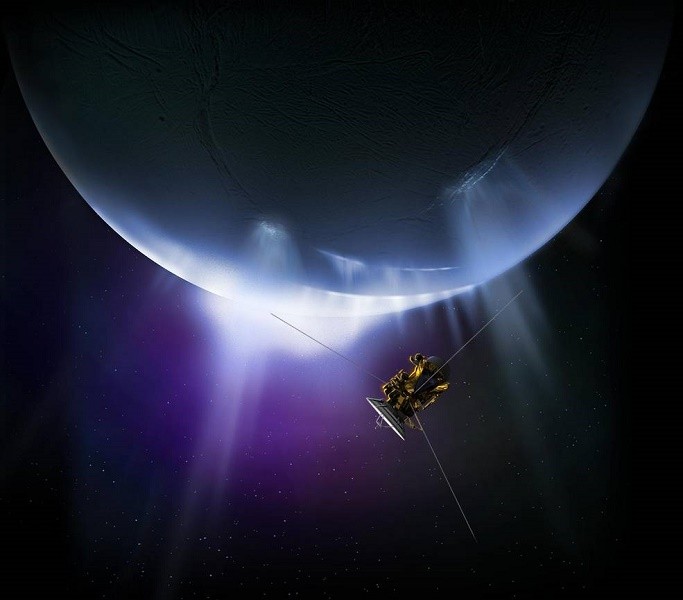NASA's Cassini probe made its last, final approach of Saturn's global ocean bearing moon, Enceladus Saturday, December 19, where the probe has been orbiting the system for more than a decade now.
The Cassini mission is scheduled to end on September 2017 and one of its major discoveries during its entire mission is that Enceladus apparently emits plumes of organic laded vapor with ice, that are shooting out into deep space from cracks and crevices of the moon's southern polar region.
Scientists are now proposing that a global ocean exists underneath Enceladus' icy surface where these plumes originate from. Also, this ocean is also connected with rock which could signify life sustaining organics and environments.
The Cassini probe zoomed by Enceladus on Saturday at 12:49 P.M. EST, at a close distance of 3,106 miles from its surface. This particular flyby should provide more data for scientists about the amount of heat that is emanating from the ice, within the moon's core and interior. These new measurements will hopefully determine the driving factors of these plumes.
According to Linda Spilker, from the Cassini team of NASA's Jet Propulsion Laboratory in California, this new understanding can lead to how much warmth Enceladus possesses in its heart that can provide more insight to the moon's geological activity.
After this last, closest flyby, Cassini will still be conducting observations of Enceladus for the remaining period of its mission however, it will be at least four times far away from this recent approach.
In October 2008, Cassini has been close enough to Enceladus, at approximately 16 miles above its surface where Saturday's flyby marks the 22nd one to visit the icy moon. Spilker adds, the probe will not come this close again with Enceladus but this opens new doors to exploring new worlds, especially other ocean worlds.



























